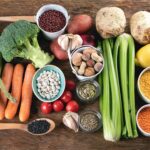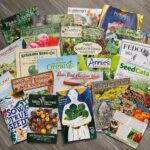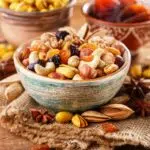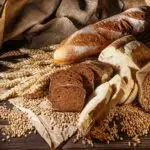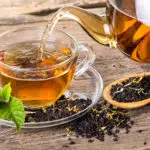Artichoke and Asparagus Month is observed annually throughout January. It’s a holiday that’s celebrated to encourage people to eat more artichokes and asparagus. Both vegetables are packed with a load of healthy nutrients that our bodies would greatly benefit from. During January and long after, we hope you’ll celebrate by adding some delicious greenery to your diet.
History of Artichoke and Asparagus Month
Also known as globe artichoke, green artichoke, or French artichoke, an artichoke is a large plant covered in thistle-like shoots and grown mainly for the consumption of its flower buds.The word ‘artichoke’ was derived from the northern Italian word ‘articiocco.’ Artichokes are usually eaten after they’ve been boiled or steamed for about 15 to 40 minutes. Though the fibrous parts of the leaves are discarded, the fleshy base and heart are often eaten with vinaigrette, hollandaise, vinegar, butter, aioli, mayonnaise, or lemon juice. In Rome, artichokes may be deep-fried, while in many places, they’re stuffed with bread crumbs, cheese, sausage, and other vegetables.Asparagus, on the other hand, is a nutritious vegetable that can be either cooked or eaten raw. However, asparagus is only eaten when its shoots are young, as the mature plant becomes too tough to cook. Asparagus is usually served as an appetizer or side dish. In Asian cuisine, asparagus is often stir-fried alongside other ingredients, such as chicken or beef. It can also be eaten raw when included in a salad.Artichokes and asparagus are both healthy vegetables that should be included in our meals more often. Artichokes are high in fiber, vitamin C, vitamin K, phosphorus, magnesium and folate. Asparagus is packed with the following nutrients: calcium, vitamin B6, magnesium, zinc, vitamin C, vitamin K, riboflavin, rutin, potassium, iron, phosphorus, and many more nutrients.In a world of fast food, Artichoke and Asparagus Month reminds us to eat healthy, nutritious meals.
Artichoke and Asparagus Month timeline
An asparagus recipe is included in one of the world’s oldest cookbooks, “De re coquinaria.”
Galen, a highly respected Roman physician, recommends asparagus as a beneficial herb.
Artichoke cultivation spreads through Italy and Southern France.
Artichokes are brought to the United States by French and Spanish immigrants.
Artichoke and Asparagus Month FAQs
How tall do asparagus plants grow?
Asparagus plants can grow as long as seven feet in height, though the appropriate length to harvest them for eating is six to ten inches.
What parts of an artichoke shouldn’t you eat?
The parts of an artichoke that shouldn’t be eaten are the outer parts of the leaves, which have a fibrous texture and the hairy choke within.
Is it bad to cook vegetables?
Contrary to popular belief, cooking vegetables isn’t bad but might even help to release more of the plant’s nutrients.
Artichoke and Asparagus Month Activities
-
Plant vegetables
Take a giant step towards a healthier lifestyle by planting your very own vegetable garden. Even better, start with artichokes and asparagus in honor of this special month.
-
Create a new recipe
Veer off the beaten path by trying out something new. Make a new artichoke and asparagus recipe, adding your own unique flavors to spice things up!
-
Let others know
Don’t keep all this information to yourself. Share this holiday with others and feel free to use the hashtag #ArtichokeAndAsparagusMonth.
5 Interesting Facts About Artichokes And Asparagus
-
Beets can dye
You can use beets to dye your hair red, albeit temporarily.
-
Tomatoes aren’t vegetables
Tomatoes are actually fruits, not vegetables.
-
Carrots can be used as a toner
Eating a lot of carrots might make a person’s skin turn yellowish-orange.
-
Cucumbers are erasers
The skin of a cucumber can be used to erase pen marks.
-
Bread stops the tears
If you want to prevent yourself from crying while cutting onions, keep a piece of bread in your mouth.
Why We Love Artichoke and Asparagus Month
-
It reforms our palates
We love Artichoke and Asparagus Month because of the lovely twist it brings to our palates. In these days of fast food, our palates need to become accustomed to more organic and natural meals.
-
It promotes healthy living
This month, we’re reminded that our diets play a huge role in our overall health and well-being. It’s important to feed our bodies with food that allows them to thrive.
-
It inspires the love of gardening
Artichoke and Asparagus Month also spreads the love of gardening. There’s nothing sweeter than homegrown vegetables.
Artichoke and Asparagus Month dates
| Year | Date | Day |
|---|---|---|
| 2023 | January 2 | Monday |
| 2024 | January 1 | Monday |
| 2025 | January 1 | Wednesday |
| 2026 | January 1 | Thursday |
| 2026 | January 1 | Friday |































